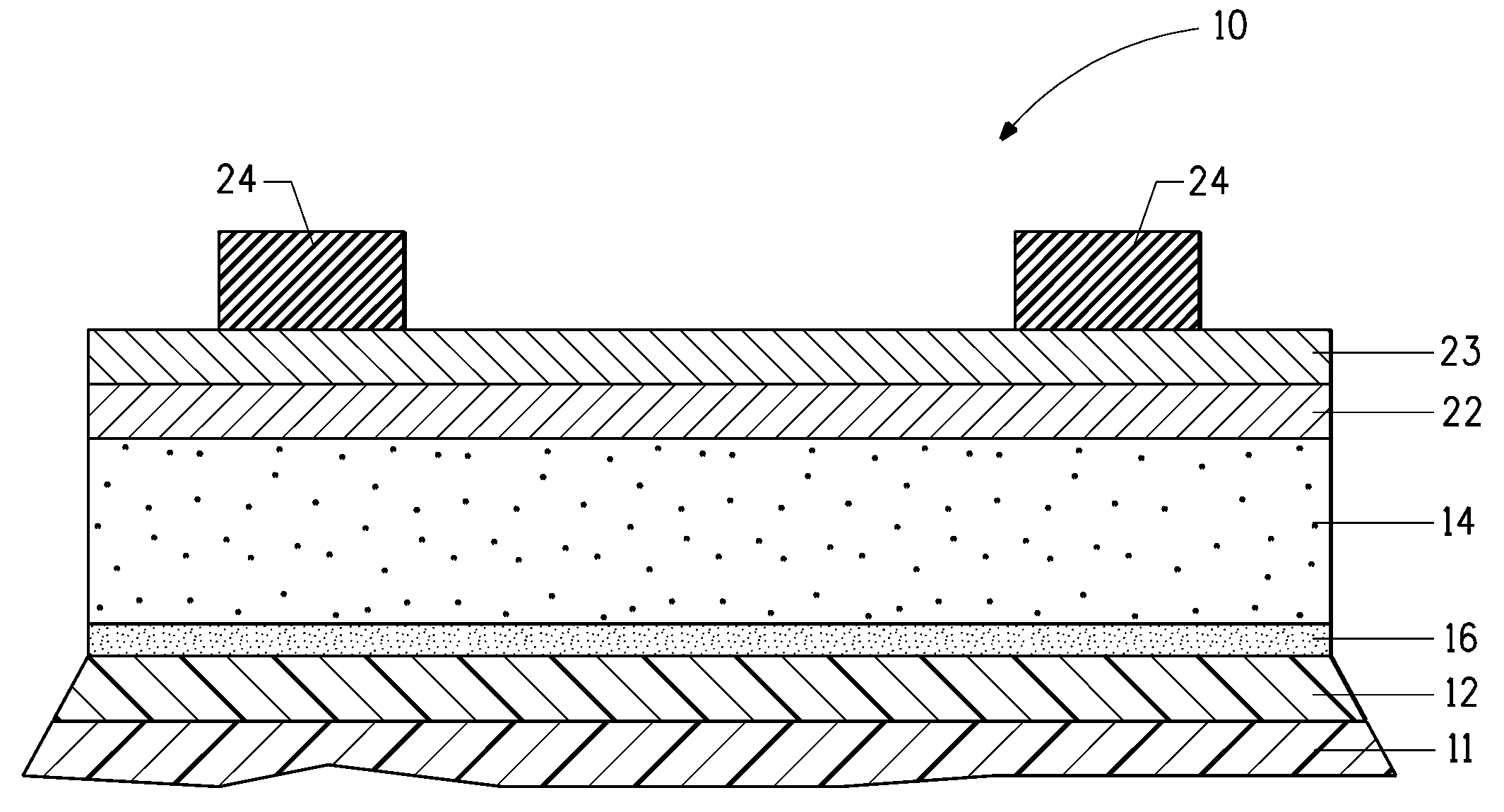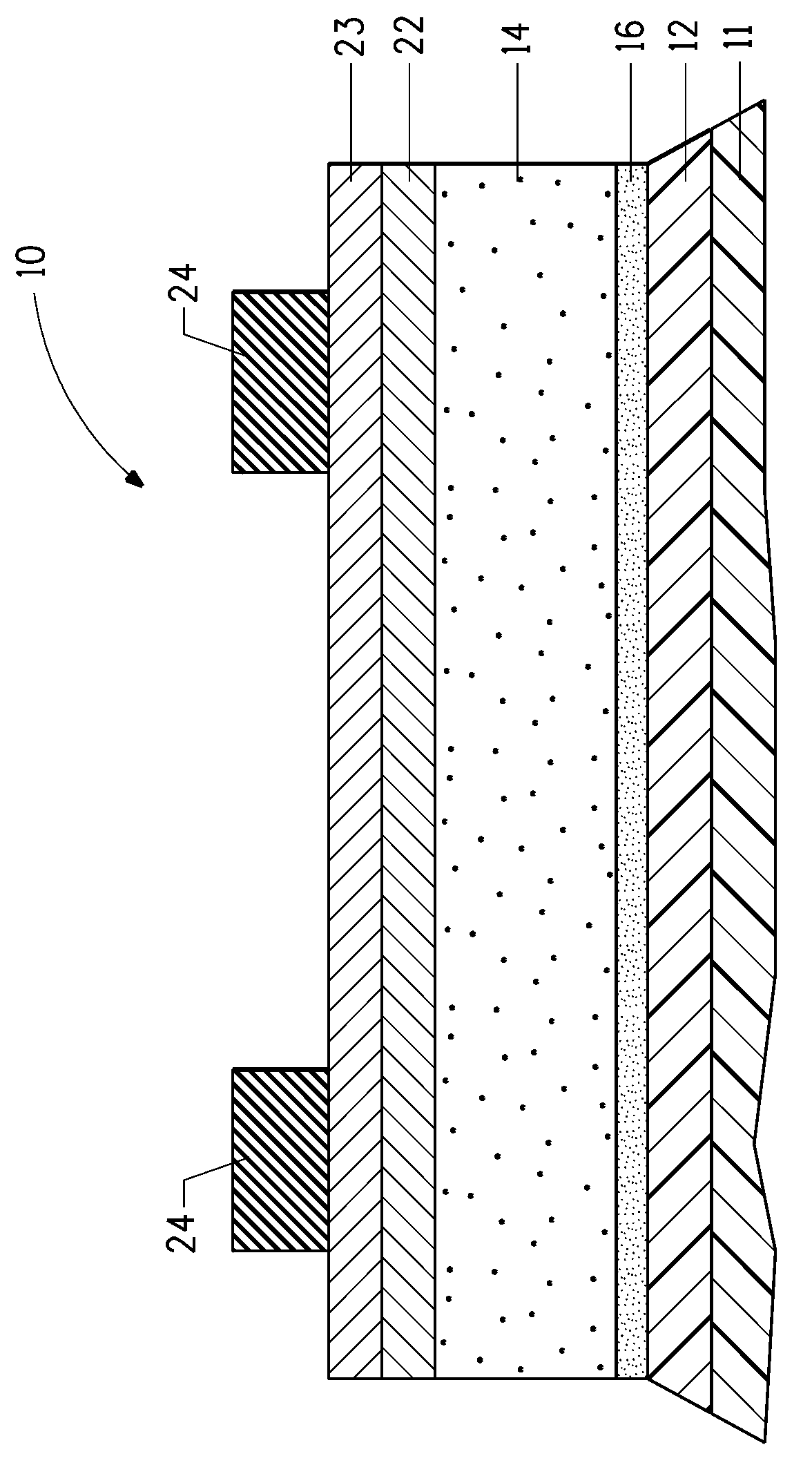Laminate structures for high temperature photovoltaic applications, and methods relating thereto
a technology of photovoltaic applications and laminates, applied in the field of thermodynamic stability and dimensional stability of polyimideonmetal laminates, can solve the problems of insufficient thermal and dimensional stability of conventional polyimides at desired cigs processing temperatures, glass lacks flexibility, and can be heavy, bulky and subject to breakag
- Summary
- Abstract
- Description
- Claims
- Application Information
AI Technical Summary
Benefits of technology
Problems solved by technology
Method used
Image
Examples
example 1
[0050]A random polyamic acid copolymer of BPDA / PMDA / / PPD / 4,4′ODA of about a 95 / 5 / / 92 / 8 molar ratio was prepared by standard methods in DMAC at about 15% solids with a slight excess of amine to a viscosity of about 50-100 poise (hereafter referred to as “prepolymer”). To this prepolymer solution, a freshly prepared solution of 6 wt % PMDA in DMAC was added in small portions incrementally to increase the molecular weight of the polymer and give a viscosity of about 500 poise as measured on a Brookfield DV-II+ viscometer at 20 rpm with a #5 spindle (hereafter referred to as “finished polymer”). The finished polymer solution was cast onto a heated glass plate and dried at about 80° C. to a tack free coating that was then carefully removed from the glass surface to yield a DMAC-containing free-standing film. This film was placed on a pin frame and placed in an oven at 120° C. for 30 minutes. Afterwards, the oven temperature was ramped to 320° C. over about 20 minutes and held at 320° C. ...
example 2
[0051]A slurry of HR-2 mica from Kish Company (Mentor, Ohio, USA) was prepared by dispersing about 70 g in 116.2 g of DMAC utilizing a Silverson high shear mixer. After the mica was thoroughly wetted out by the solvent, a small portion (13.8 g) of the prepolymer from Example 1 was added and the slurry was allowed to further mix for about 30 min. A portion of this slurry (17.7 grams) was added to a larger portion of the prepolymer from Example 1 (179.6 g) and this mixture was stirred for about 1 hour using a high torque mixer. To this prepolymer / filler mixture, small portions of PMDA in DMAC were added incrementally in order to increase the polymer molecular weight and bring the viscosity of the mixture to about 500 poise (Brookfield, ref. Example 1). This finished polymer / mica mixture was cast into a film and cured in a similar manner to that described in Example 1 to yield a filled polyimide film containing about 20 wt % mica.
example 3
[0052]In a similar manner to Example 2, a second portion (41.5 g) of the slurry described in Example 2 was added to a 156.2 g portion of the prepolymer from Example 1. This prepolymer / mica mixture was finished, cast and cured in a manner similar to that described in Examples 1 and 2 to yield a filled polyimide film containing about 40 wt % mica.
PUM
| Property | Measurement | Unit |
|---|---|---|
| Temperature | aaaaa | aaaaa |
| Temperature | aaaaa | aaaaa |
| Temperature | aaaaa | aaaaa |
Abstract
Description
Claims
Application Information
 Login to View More
Login to View More - R&D
- Intellectual Property
- Life Sciences
- Materials
- Tech Scout
- Unparalleled Data Quality
- Higher Quality Content
- 60% Fewer Hallucinations
Browse by: Latest US Patents, China's latest patents, Technical Efficacy Thesaurus, Application Domain, Technology Topic, Popular Technical Reports.
© 2025 PatSnap. All rights reserved.Legal|Privacy policy|Modern Slavery Act Transparency Statement|Sitemap|About US| Contact US: help@patsnap.com


